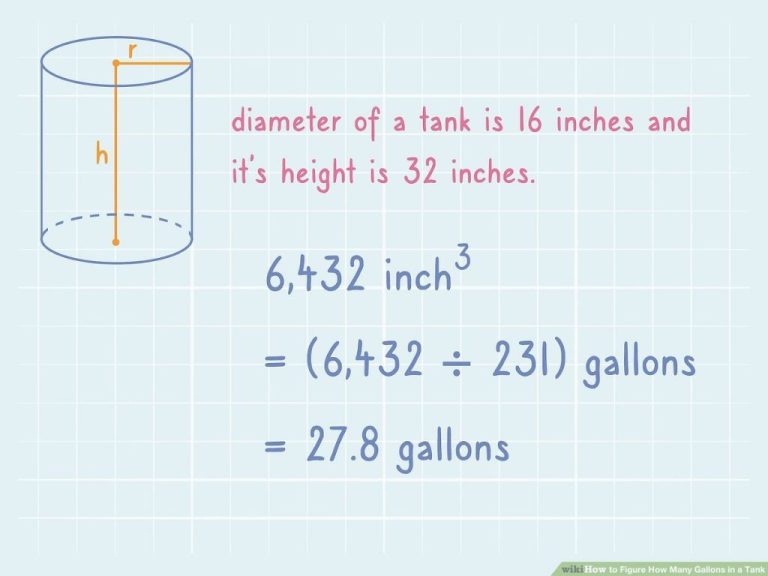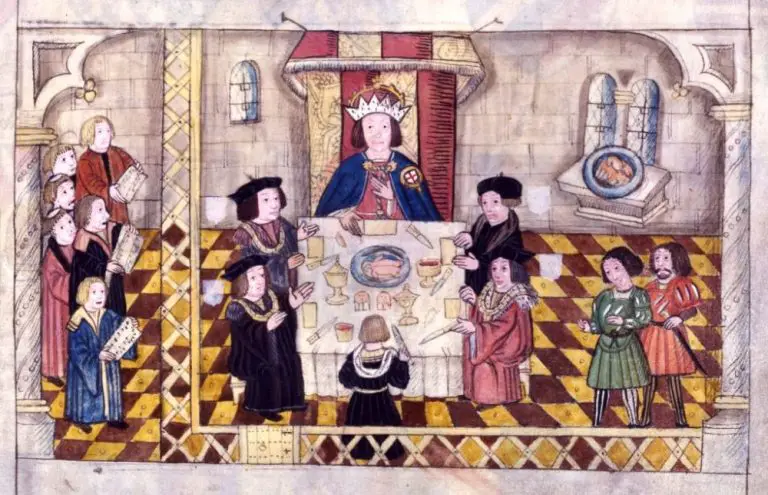Does Soil And Water Make Clay?
What is Clay?
Clay is a type of fine-grained soil that is plastic when wet, but hard when dried. It is made up of tiny, microscopic and sub-microscopic particles derived from the natural weathering of rocks over long periods of time. When water is added to clay, it becomes moldable and can be shaped into pottery items. As the water evaporates, the clay hardens.
Clay has a flaky, crystalline structure that causes the particles to bind together tightly, giving clay unique properties compared to other types of soils. Due to the small size of the particles, clay has a much larger total surface area per unit volume than other soil types, which gives clay a high cation exchange capacity. This means clay attracts and holds positively charged nutrient ions.
Clay often forms from the chemical weathering of feldspar and other minerals. It is plastic due to its water content and becomes hard, brittle and non–plastic upon drying or firing. Structures made of clay, such as pottery, have been important to humankind for thousands of years.
Clay Composition
Clay is composed of very small particles. The main components of clay are aluminum silicates, which contain aluminum, silicon, and oxygen. Clays also typically contain varying amounts of other materials like calcium, potassium, and sodium.
The small size of the particles that make up clay is a key factor that distinguishes it from other types of soil. Clay particles are less than 0.002 millimeters (mm) in size, which makes them tiny enough to feel smooth and plastic when wet. This small particle size also gives clay unique properties like being able to hold its shape when molded.
While the exact composition varies across clay types, the predominant presence of aluminum silicates derived from the chemical weathering of rocks generally defines the makeup of clay. The small size of the particles allows clays to demonstrate plasticity and “stickiness” when mixed with water.
Origin of Clay
Clay forms over long periods of time from the gradual chemical weathering of rocks. It is the result of the breakdown of feldspar and other minerals that make up granite and other igneous rocks. As these rocks are exposed to water, air, acids, and temperature changes, they slowly break apart in a process known as chemical weathering.
The feldspar in granite reacts with water and carbon dioxide and gradually transforms into clay minerals like kaolinite and montmorillonite. Other minerals like quartz and mica also break down into clay particles. This process can take thousands or even millions of years for rocks to fully transform into clay.
Factors like climate, vegetation, topography, and drainage impact the rate of chemical weathering. In tropical environments with heavy rainfall, rocks weather faster compared to dry desert climates. The end result of this long chemical weathering process is fine clay particles that give clay its unique properties.
Role of Water
Water plays a crucial role in the formation of clay. As rainfall and other water sources flow over rock and soil, they help transport weathered minerals and deposit them in places where clay can form. The minerals that make up clay, such as kaolinite, are the result of the chemical weathering and erosion caused by water moving over land surfaces and interacting with other materials.
In addition to transporting the minerals that combine to create clay, water also gives clay its distinctive plasticity properties. The plate-like structure of clay’s mineral components gives it a high surface area that readily absorbs water molecules. The interaction between the clay particles and water molecules allows clay to be molded and shaped. When clay is wet, the water acts as a lubricant between the particles so they can slide over one another. When the water content is reduced, the clay becomes firmer as the particles move closer together. The amount of water present directly impacts the workability and stiffness of the clay.
Soil Types
Different soils have varying clay composition based on the ratio of sand, silt and clay particles present. There are four main types of soils:
Sandy Soil
Sandy soil is made up of large particles and has a gritty texture. It has high drainage and low fertility. Sandy soil contains a small amount of clay, less than 20%.
Silty Soil
Silty soil is smooth and slippery. It holds nutrients and water well. Silty soil contains around 20-50% clay particles.
Loamy Soil
Loamy soil is a mix of sand, silt and clay in balanced proportions. It has good drainage and fertility for growing plants. Loamy soils contain 30-50% clay content.
Clayey Soil
Clayey soil is sticky and dense. It has poor drainage but good ability to retain moisture and nutrients. Clayey soil has over 50% clay particles.
Making Clay
Clay can be produced by mixing specific proportions of water and particular soils. The key is having soils that are high in clay content. Clays develop from the chemical weathering of rocks over long periods of time. The weathering process breaks down feldspar minerals within rocks into very fine particles.
These fine particles that give clay its plasticity are less than 0.002 millimeters in size. To make clay, you need a soil with at least 20% to 30% clay content. Top soils from areas known for their pottery typically have an ideal composition. Some of the most common clays used in pottery include:
- Kaolin – Also known as china clay. It has low plasticity and fires to a white color.
- Ball clay – Very plastic clay that fires to a light cream color.
- Stoneware clay – Fires to a brown or grey color with low shrinkage.
- Earthenware clay – Has a high iron content and fires to various shades of red and brown.
The clay is dug from quarries and then further refined. To make clay at home, mix the soil with enough water to make a thick malleable dough. The ideal consistency varies based on the clay type and intended use. Knead the clay thoroughly to create an even mixture free of lumps and rocks. Homemade clay can then be used similarly to store-bought clays for arts, crafts, and DIY projects.
Clay vs Playdough
While clay and playdough may seem similar at first glance, there are some key differences between the two.
Store-bought playdough has added ingredients like salt, flour, and cream of tartar. These ingredients give playdough its smooth, doughy texture and also prevent it from hardening and drying out like clay. Playdough is intended for molding, squishing, and creative playtime. It’s not meant to be a permanent material.
Clay, on the other hand, contains no added ingredients. It’s composed of fine mineral particles found naturally in soil. When clay is mixed with the right amount of water, it becomes a moldable, pliable material that holds its shape when air dries. Finished clay creations can even be fired in a kiln to harden them permanently.
So while both can be fun to shape and mold, clay is generally used for more lasting creations, from pottery to sculpture. Playdough is better suited for open-ended artistic play and enjoyment in the moment before being recycled and reused.
Using Clay
Clay has been used throughout history for pottery, sculptures, construction, and more. Evidence of clay pottery has been found dating back over 20,000 years ago during the Paleolithic era. Ancient civilizations around the world shaped clay into functional and decorative objects. The first kilns for firing clay were developed around 6,000 BC. Famous pottery styles include Greek Black and Red Figure pottery, Chinese porcelain, and Aztec painted vessels. Clay was also one of the earliest materials used for building, in the form of bricks, tiles, and clay plaster.
Clay is still popular today for arts, crafts, and building materials. Many art classes and schools teach pottery using clay. It is easy to mold clay into endless shapes and designs. Air-dry, polymer, and modeling clays allow creating crafts without needing a kiln to harden. Structural clay blocks, bricks, and tiles continue to be used in construction and architecture. Clay’s versatility, abundance, and workability ensure it will remain in use for many more millennia.
Clay Properties
Clay has some unique properties that make it a versatile material for many different uses. Here are a few of the key properties of clay:
Absorbs water easily – Due to its porous nature, clay can quickly absorb large amounts of water. This makes it easy to mix water into clay to achieve an ideal consistency for sculpting and shaping. The water molecules bind to the clay particles and help make the clay more malleable.
Retains moisture – Once clay absorbs water, it retains that moisture very well. Even when exposed to air, it dries out very slowly and stays workable for long periods of time. This gives you plenty of time to work with the clay before it dries out.
Can be dried, recycled and reused – After finishing a clay sculpture, you can allow the clay to air dry completely. The water will evaporate out over time. The dried clay can then be soaked in water again to recycle it for future projects. Clay can go through this process many times.
Has binding properties – Clay particles carry an electrostatic charge that allows them to bind together to form a cohesive mass when wet. This binding quality allows clay to be molded into solid 3D forms and sculptures. It retains its shape as it dries out or is fired.
Fun Clay Facts
Clay has been an important part of human history and culture for thousands of years. Here are some interesting facts about the oldest and largest clay deposits, as well as the earliest uses of clay:
The oldest clay artifacts ever discovered date back over 24,000 years. Archaeologists have found ancient clay figurines, pots, and sculptures created by early human civilizations across the world. The longevity of clay artifacts is a testament to the durability and versatility of clay as an art medium.
The largest clay deposits in the world are located in Western Australia. The natural clay deposits across Western Australia are estimated to hold billions of tons of kaolin and bentonite clays. These vast clay reserves supply global markets and are used to manufacture a wide range of clay products.
Clay tablets were one of the earliest forms of writing medium. Ancient Sumerians and Babylonians wrote on clay tablets using a blunt reed called a stylus. The tablets were then dried to preserve the writing. Clay’s abundance made it a convenient and accessible writing surface for early scribes.





